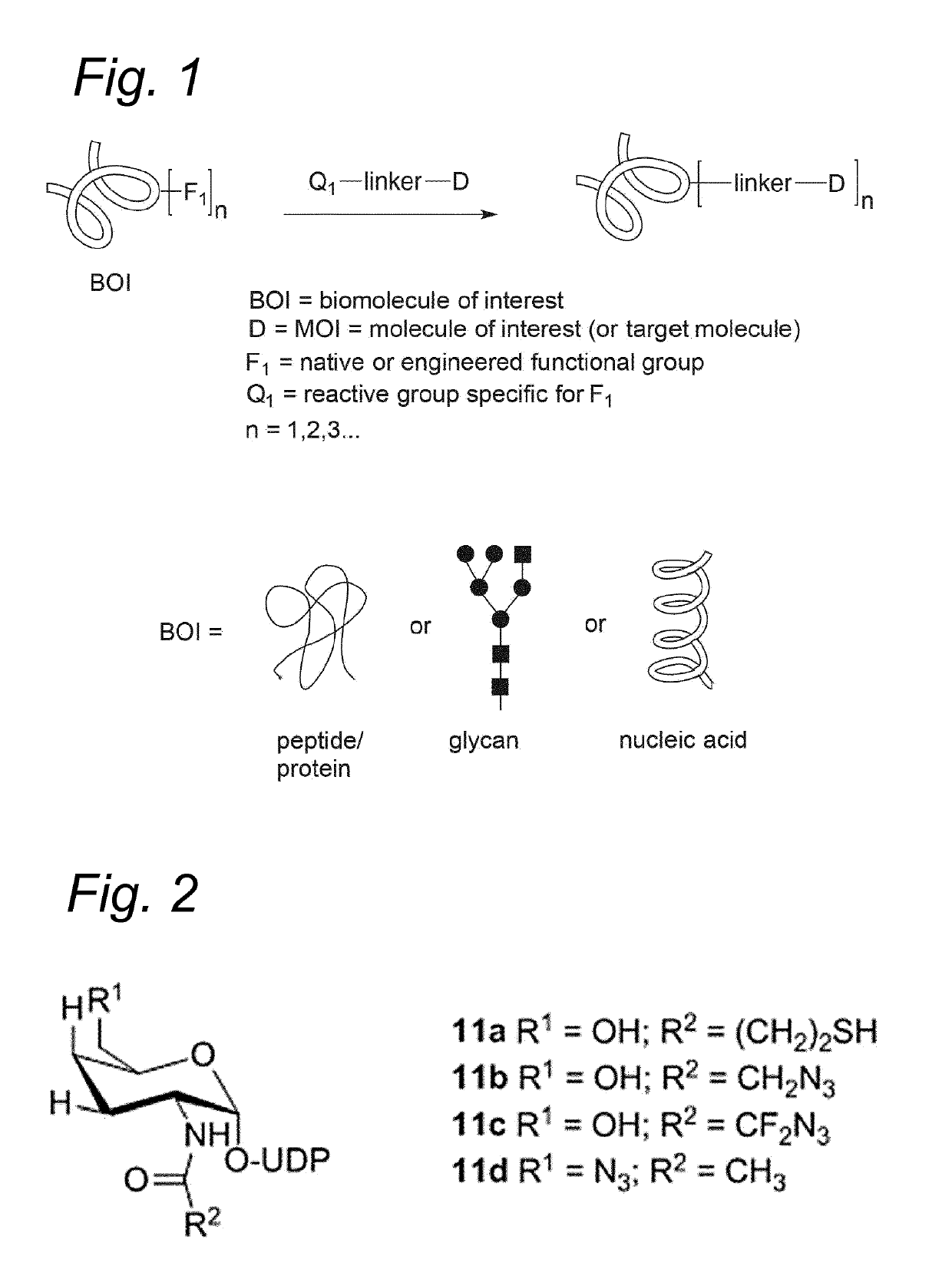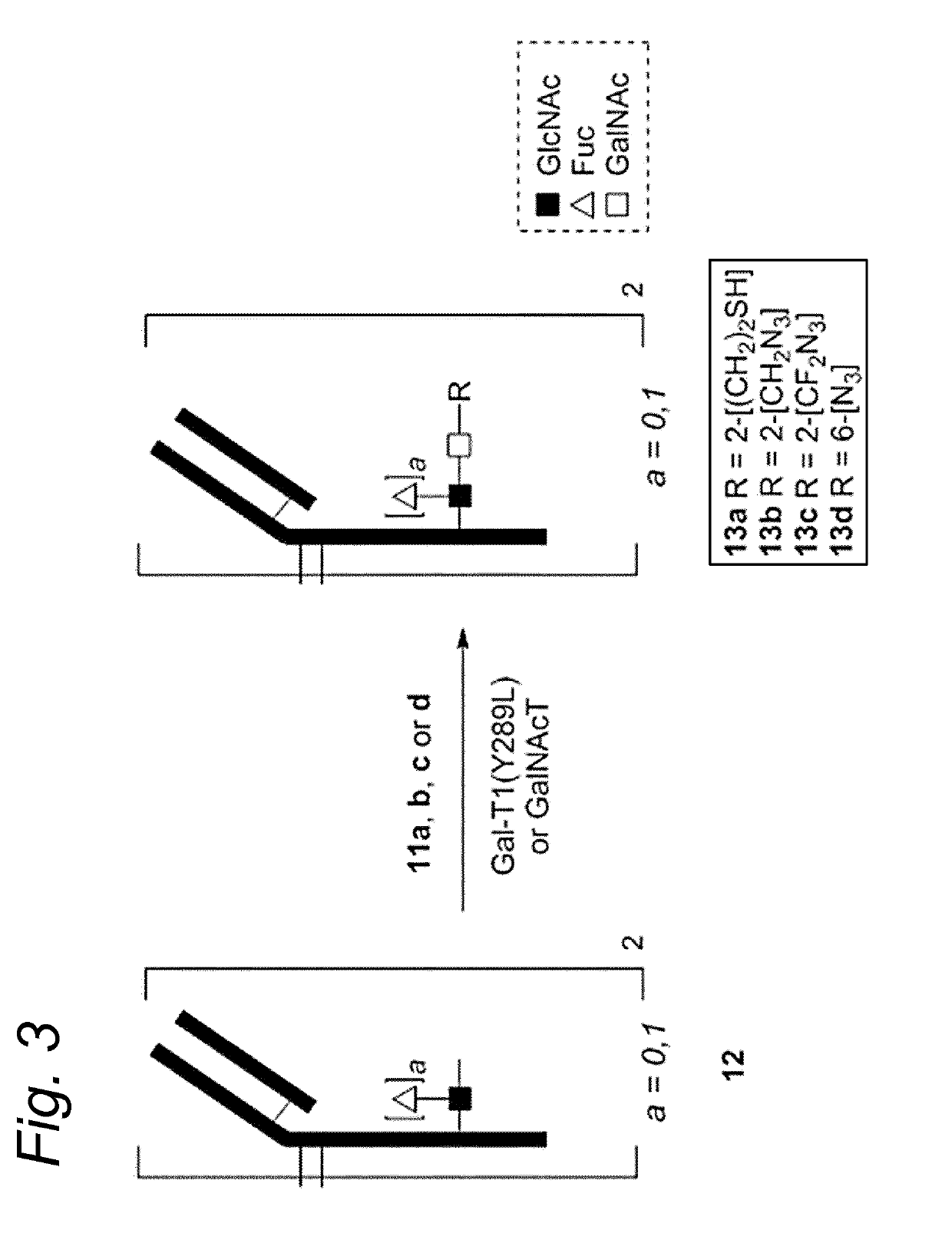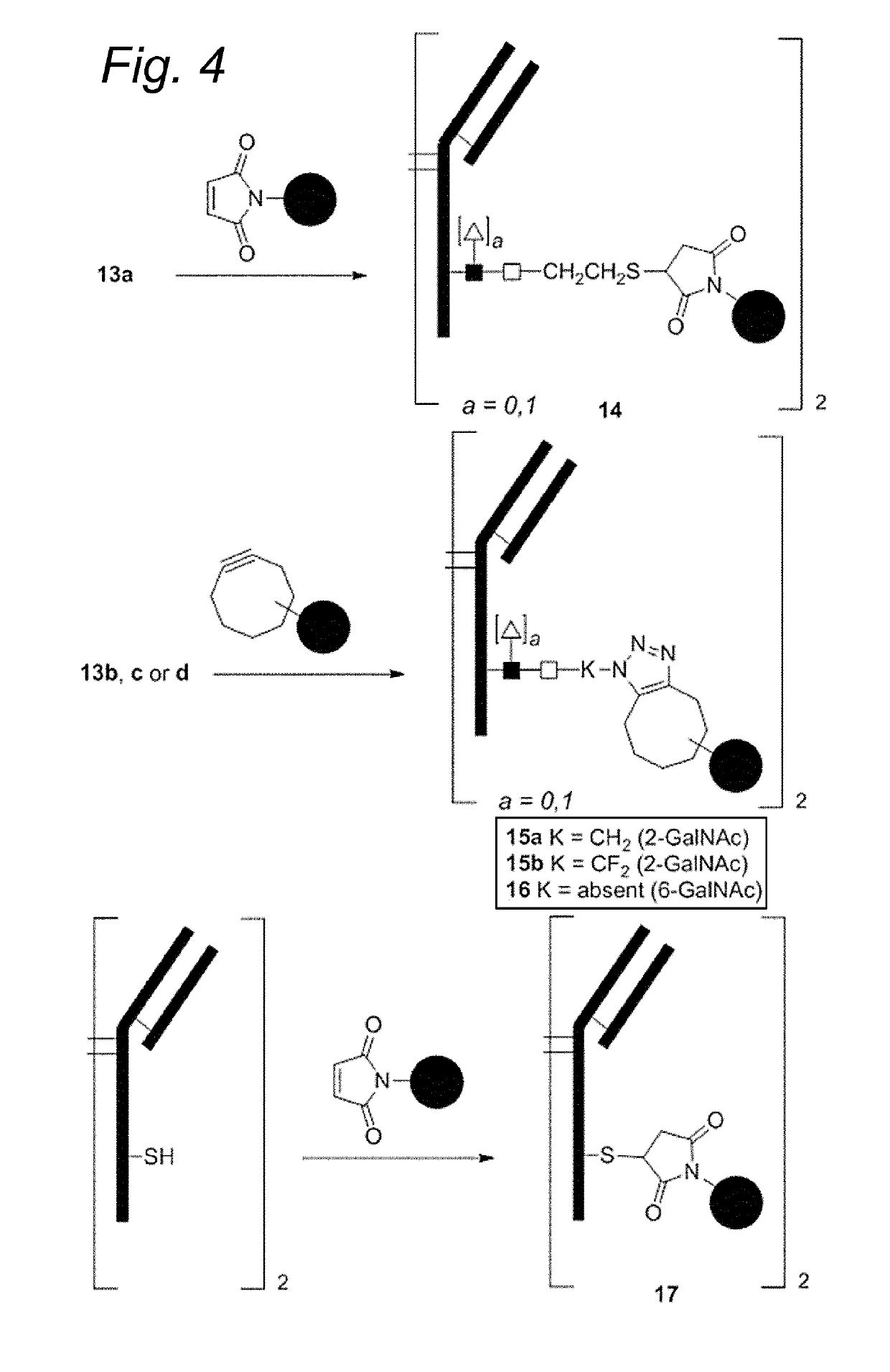Bioconjugates containing sulfamide linkers for use in treatment
a technology of sulfamide linkers and bioconjugates, which is applied in the field of bioconjugation, can solve the problems of limiting the choice of reactive groups, high restrictions on biomolecules, and compromising conjugation efficiency
- Summary
- Abstract
- Description
- Claims
- Application Information
AI Technical Summary
Benefits of technology
Problems solved by technology
Method used
Image
Examples
example 1
on of 13b with 30 to Obtain Conjugate 96
[0387]The bioconjugate according to the invention was prepared by conjugation of compound 30 as linker-conjugate to modified biomolecule 13b as biomolecule. To a solution of trastuzumab(azide)2 (13b) (15.5 mL, 255 mg, 16.47 mg / ml in PBS pH 7.4) was added DMA (1.45 mL) and compound 30 (255 μL, 40 mM solution DMA). The reaction was incubated overnight at rt followed by purification on a HiLoad 26 / 600 Superdex200 PG column (GE Healthcare) on an AKTA Purifier-10 (GE Healthcare). Mass spectral analysis of the reduced sample showed one major heavy chain product (observed mass 50938 Da, approximately 80% of total heavy chain fragment), corresponding to the conjugated heavy chain.
example 2
on of 13b with 33 to Obtain Conjugate 95
[0388]The bioconjugate according to the invention was prepared by conjugation of compound 33 as linker-conjugate to modified biomolecule 13b as biomolecule. To a solution of trastuzumab(azide)2 (13b) (607 μL, 10 mg, 16.47 mg / ml in PBS pH 7.4) was added MilliQ (50 μL) and compound 33 (10 μL, 40 mM solution in DMA). The reaction was incubated overnight at rt followed by purification on a Superdex200 10 / 300 GL (GE Healthcare) on an AKTA Purifier-10 (GE Healthcare). Mass spectral analysis of the reduced sample showed one major heavy chain product (observed mass 50982 Da, approximately 80% of total heavy chain fragment), corresponding to the conjugated heavy chain.
example 3
on of 13c with 30 to Obtain Conjugate 98
[0389]The bioconjugate according to the invention was prepared by conjugation of compound 30 as linker-conjugate to modified biomolecule 13c as biomolecule. To a solution of trastuzumab(azide)2 (13c) (14.25 mL, 250 mg, 17.55 mg / ml in PBS pH 7.4) was added DMA (1.4 mL) and compound 30 (250 μL, 40 mM solution DMA). The reaction was incubated overnight at rt followed by purification on a HiLoad 26 / 600 Superdex200 PG column (GE Healthcare) on an AKTA Purifier-10 (GE Healthcare). Mass spectral analysis of the reduced sample showed one major heavy chain product (observed mass 50969 Da, approximately 70% of total heavy chain fragment), corresponding to the conjugated heavy chain.
PUM
| Property | Measurement | Unit |
|---|---|---|
| Time | aaaaa | aaaaa |
| Time | aaaaa | aaaaa |
| Mass | aaaaa | aaaaa |
Abstract
Description
Claims
Application Information
 Login to View More
Login to View More - R&D
- Intellectual Property
- Life Sciences
- Materials
- Tech Scout
- Unparalleled Data Quality
- Higher Quality Content
- 60% Fewer Hallucinations
Browse by: Latest US Patents, China's latest patents, Technical Efficacy Thesaurus, Application Domain, Technology Topic, Popular Technical Reports.
© 2025 PatSnap. All rights reserved.Legal|Privacy policy|Modern Slavery Act Transparency Statement|Sitemap|About US| Contact US: help@patsnap.com



